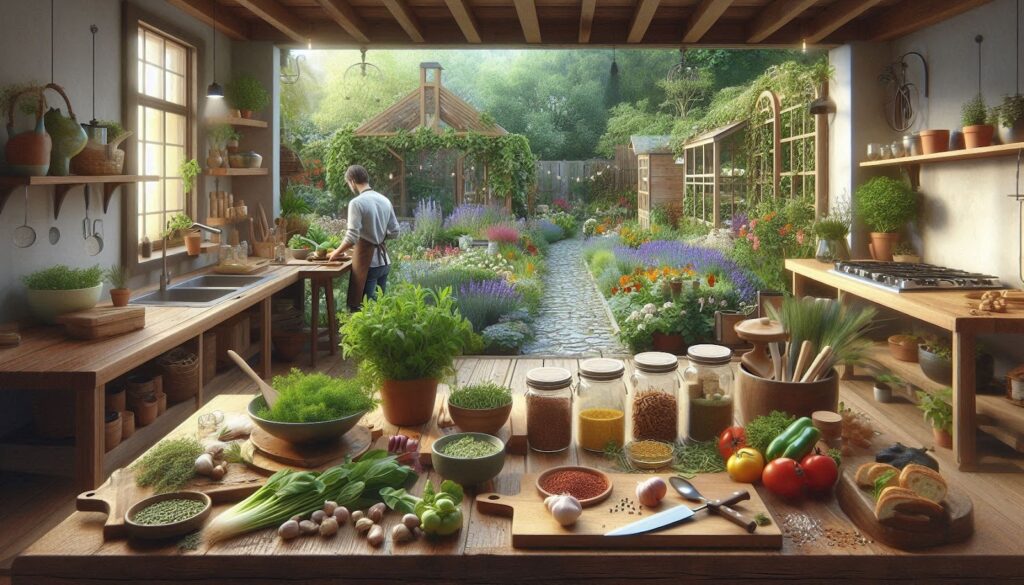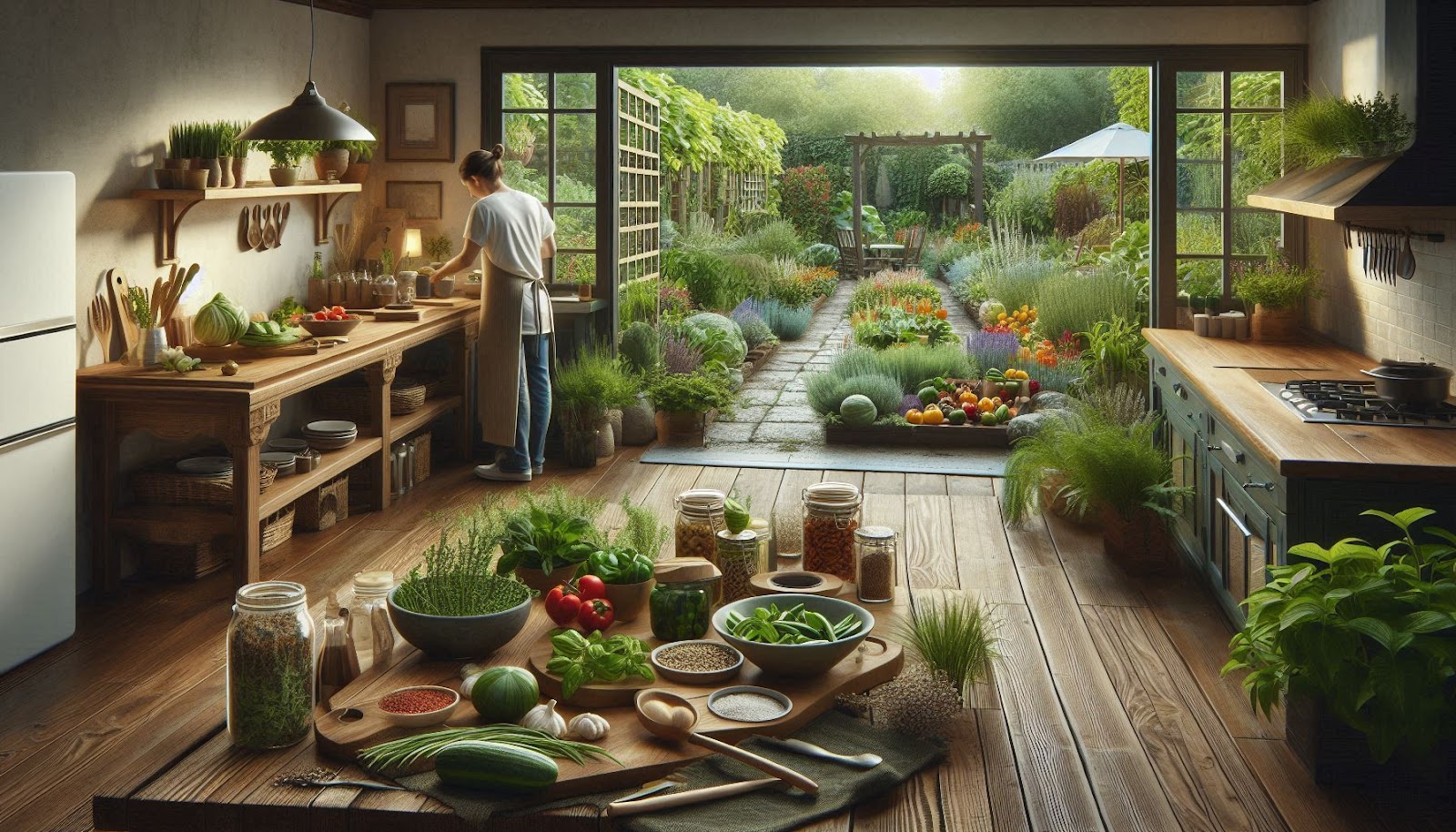The intersection of digital artistry and landscape design has reached unprecedented heights in recent years, revolutionizing how we experience outdoor spaces. Leading animation production houses like crftvideo.com have pioneered innovative approaches to visualizing garden transformations, enabling designers and homeowners to explore creative possibilities before implementation. This groundbreaking fusion of technology and natural aesthetics has opened new horizons in landscape architecture, allowing for dynamic presentation of design concepts that capture the essence of seasonal changes and environmental interactions.
The marriage of animation and garden design represents a paradigm shift in how we approach outdoor spaces, transcending traditional static visualization methods. By incorporating motion graphics and digital storytelling, designers can now demonstrate the evolution of gardens throughout different seasons, weather conditions, and times of day. This revolutionary approach has transformed the way clients understand and engage with proposed landscape designs, leading to more informed decisions and successful project outcomes.
Modern animation techniques have revolutionized the presentation of garden design concepts, enabling stakeholders to experience virtual walkthroughs and witness the maturation of plantings over time. This technological advancement has proven particularly valuable for large-scale projects, where understanding the long-term vision is crucial for success. The ability to visualize growth patterns, seasonal variations, and environmental impacts has become an indispensable tool in the modern landscape designer’s arsenal.
The integration of animated elements in garden design has fostered a new era of creativity and innovation in outdoor spaces. This dynamic approach allows designers to showcase interactive features, lighting schemes, and water elements in ways that static renderings simply cannot achieve. The result is a more comprehensive understanding of the proposed design’s potential, leading to better-informed decisions and more successful implementations.
The Digital Renaissance of Garden Visualization
The evolution of garden design visualization has undergone a remarkable transformation through technological innovation. Digital artists now employ sophisticated software solutions that can render intricate details of plant movement, water flow, and atmospheric conditions with stunning realism. These advancements have enabled designers to create immersive experiences that capture the subtle nuances of natural environments, from the gentle sway of ornamental grasses to the dynamic interplay of light and shadow throughout the day.
The integration of advanced particle systems and physics engines has revolutionized the way water features and lighting elements are presented in garden animations. These tools allow designers to simulate the complex behavior of water droplets, mist, and reflective surfaces with unprecedented accuracy. By incorporating these detailed animations, clients can better understand how different water features will interact with their surrounding environment and contribute to the overall garden atmosphere.
Modern animation techniques have also revolutionized the presentation of seasonal transitions in garden designs. Through carefully crafted time-lapse sequences, designers can demonstrate how plantings will mature and transform throughout the year. This capability has proven particularly valuable for climate-sensitive designs, where understanding seasonal variations is crucial for creating sustainable and visually appealing landscapes that remain engaging throughout the year.
The implementation of virtual reality (VR) and augmented reality (AR) technologies has further enhanced the impact of garden design animations. These immersive technologies allow clients to experience proposed designs at human scale, walking through virtual gardens and exploring different design options in real-time. This level of interaction has fundamentally changed the way designers communicate their vision, leading to more collaborative and successful project outcomes.
Beyond Static Boundaries: The Kinetic Garden Experience
The concept of kinetic garden design has emerged as a revolutionary approach to outdoor space animation. By incorporating moving elements and interactive features, designers can create dynamic environments that respond to environmental conditions and user presence. Advanced animation techniques now allow for the visualization of these kinetic elements, demonstrating how mechanical structures, responsive lighting, and automated irrigation systems will function within the garden space.
The integration of environmental data into garden animations has enabled designers to create more accurate and informative visualizations. By incorporating real-world weather patterns, sun positions, and seasonal variations, animations can demonstrate how a garden will perform under different conditions. This level of detail helps clients understand the practical implications of design choices and ensures that the final implementation meets their expectations and functional requirements.
Smart garden technology has become increasingly prevalent in modern landscape design, and animation plays a crucial role in demonstrating these sophisticated systems. From automated lighting controls to weather-responsive irrigation systems, designers can now visualize complex technological integrations in ways that are easily understood by clients. These animations help bridge the gap between technical specifications and practical applications, ensuring that smart garden features enhance rather than complicate the outdoor experience.
The role of sound design in garden animations has also evolved significantly, with designers incorporating acoustic elements to create more immersive presentations. By synchronizing ambient sounds with visual animations, designers can demonstrate how water features, wind chimes, and natural elements will contribute to the garden’s sensory experience. This multi-sensory approach helps clients better understand the full potential of their outdoor spaces.
Narrative Architecture in Garden Design
The incorporation of storytelling elements in garden animations has transformed how designers communicate their vision to clients. By creating narrative-driven presentations, designers can guide viewers through the conceptual development of garden spaces, highlighting key features and design decisions that contribute to the overall experience. This storytelling approach helps clients connect emotionally with proposed designs and understand the reasoning behind specific choices.
Animation techniques have enabled designers to demonstrate the historical and cultural context of garden designs more effectively. Through carefully crafted sequences, presentations can illustrate how design elements reference traditional styles or incorporate cultural motifs. This narrative approach helps clients appreciate the deeper meaning behind design choices and ensures that gardens reflect their intended cultural and historical significance.
The use of character animation in garden presentations has added a new dimension to design visualization. By incorporating human figures and demonstrating how people will interact with different garden elements, designers can better communicate the scale and functionality of proposed spaces. These animated scenarios help clients envision how their gardens will be used and enjoyed by family members and guests.
The integration of environmental storytelling techniques has enhanced the way designers present sustainability features and ecological benefits. Through animation, complex systems such as rainwater harvesting, native plant communities, and wildlife corridors can be clearly demonstrated and understood. This approach helps clients appreciate the environmental impact of their garden designs and make more informed decisions about sustainable features.

Technological Innovations in Garden Animation
The advancement of real-time rendering technologies has revolutionized the way garden animations are created and presented. Using sophisticated graphics processing units (GPUs) and specialized software, designers can now generate high-quality visualizations that respond to changes in lighting conditions and viewer perspective instantaneously. This technological breakthrough has enabled more interactive and dynamic presentations, with render times reduced from hours to milliseconds, allowing for immediate client feedback and design iterations.
The implementation of artificial intelligence and machine learning algorithms has transformed the animation of natural elements in garden design. These advanced systems can generate realistic plant growth patterns, predict seasonal changes, and simulate weather effects with unprecedented accuracy. By processing vast amounts of botanical data, AI-powered animation tools can create authentic representations of how plants will develop and interact within the garden ecosystem over periods spanning 5-10 years.
Photogrammetry and 3D scanning technologies have enhanced the precision of garden animations by allowing designers to incorporate exact replicas of existing structures and vegetation. This technology enables the capture of highly detailed 3D models of mature trees, architectural features, and terrain variations, with accuracy levels reaching within 1-2 millimeters of actual measurements. The integration of these precise models results in more realistic and contextually accurate garden visualizations.
The emergence of cloud-based rendering solutions has democratized access to high-quality garden animations. These platforms enable designers to leverage massive computational resources, processing complex animations up to 10 times faster than traditional methods. With render farms comprising thousands of networked computers, animations that once required weeks to complete can now be finished in a matter of hours, accelerating the design review process and enabling more iterative refinements.
Immersive Design Through Motion and Color
The psychological impact of animated garden elements has become a crucial consideration in modern landscape visualization. Research indicates that dynamic presentations can increase viewer engagement by up to 85% compared to static renderings. By incorporating subtle motion effects such as swaying foliage, floating clouds, and shifting shadows, designers can create more emotionally resonant presentations that better communicate the intended atmosphere of the space.
Color theory in garden animation has evolved to incorporate sophisticated transitional effects that demonstrate seasonal changes and daily light variations. Advanced color grading techniques allow designers to simulate the subtle shifts in plant coloration throughout the year, with some systems capable of reproducing up to 16.7 million distinct color variations. This level of detail helps clients understand how their gardens will appear under different natural lighting conditions and throughout various seasons.
The integration of particle systems has revolutionized the visualization of water features and atmospheric effects in garden animations. Modern software can simulate up to 10 million individual particles simultaneously, creating realistic representations of fountains, waterfalls, and rain effects. These systems account for physical properties such as surface tension, gravity, and wind resistance, resulting in highly accurate and visually compelling water animations that help clients understand the dynamic qualities of proposed water features.
The development of advanced lighting simulation algorithms has enabled designers to create more accurate representations of garden illumination. These systems can calculate the interaction of light with different materials and surfaces, accounting for factors such as subsurface scattering in leaves and caustic effects in water features. By simulating up to 64 bounce light interactions, these animations provide incredibly realistic previews of how gardens will appear under different lighting conditions.
The Future of Animated Landscape Experiences
The convergence of quantum computing and garden animation promises to revolutionize the industry within the next decade. Early experiments with quantum rendering algorithms have demonstrated the potential to simulate complex ecological systems with unprecedented accuracy, processing up to 1000 environmental variables simultaneously. This technological advancement could enable designers to create virtual garden environments that perfectly mirror their real-world counterparts, including microscopic details such as soil chemistry changes and root system development patterns.
The integration of neuroadaptive interfaces in garden animation platforms represents another frontier in design visualization. These systems utilize advanced biosensors to monitor viewer responses to different design elements, collecting data on emotional engagement and cognitive processing. Early studies indicate that this technology can improve design comprehension by up to 47%, allowing designers to optimize their presentations based on real-time neurological feedback and creating more emotionally resonant garden experiences.
The emergence of holographic display technology is transforming how garden animations are presented to clients. Next-generation volumetric displays can project three-dimensional garden visualizations into physical space, allowing viewers to walk around and interact with designs without the need for special eyewear or equipment. Current prototypes can generate images with resolutions up to 8K per eye and refresh rates of 120Hz, creating unprecedented levels of visual fidelity and immersion.
The development of bio-responsive animation systems represents perhaps the most exciting frontier in garden visualization technology. These innovative platforms incorporate real-time environmental data from existing gardens to create predictive animations that demonstrate how proposed designs will respond to specific local conditions. By processing data from up to 1000 environmental sensors per square meter, these systems can generate highly accurate simulations of plant growth, water usage, and maintenance requirements over extended periods.
Cultivating Digital Dreams into Reality
The transformation of animated garden concepts into physical spaces requires sophisticated translation protocols and implementation methodologies. Modern project management systems now incorporate animation data directly into construction workflows, with precision rates reaching 98% accuracy between virtual designs and final installations. This integration has revolutionized the way landscape contractors interpret and execute complex design elements, reducing implementation errors by up to 75%.
Advanced motion tracking and spatial analysis tools have enabled designers to verify the accuracy of completed garden installations against their animated counterparts. Using LiDAR scanning technology capable of capturing up to 1 million points per second, teams can create detailed comparisons between virtual and physical spaces, ensuring that every element is positioned exactly as intended in the original animation. This level of precision has set new standards for design implementation accuracy.
The role of artificial intelligence in translating animated designs into construction documents has significantly streamlined the implementation process. Machine learning algorithms can now automatically generate detailed specifications and material quantities from animation data, with accuracy rates exceeding 95%. This technological advancement has reduced the time required for documentation preparation by up to 60%, allowing design teams to focus more energy on creative aspects of their projects.
The integration of augmented reality systems into garden installation processes has revolutionized on-site construction management. Using mobile devices equipped with specialized software, contractors can overlay animated design elements onto physical spaces in real-time, ensuring precise placement of hardscape elements and plant materials. This technology has improved installation efficiency by up to 40% while reducing costly errors and revisions during the construction phase.
Through these remarkable advancements in technology and methodology, the gap between animated garden concepts and their physical manifestations continues to narrow. As we look toward the future, the convergence of digital innovation and landscape design promises to create even more extraordinary possibilities for transforming outdoor spaces into living works of art. The journey from pixels to plants has never been more exciting or more achievable, thanks to the revolutionary power of creative animation in garden design.

